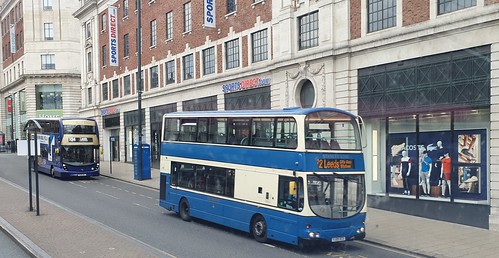Ies and overall health facilities have been the two probably settings for AIDS stigma [33, 45, 46]. To accomplish this, we chosen three subgroups; PLHA, well being pros, along with the general overall health care searching for RO9021 cost public. This paper reports findings from the latter group. Participants were sampled from a multitude of overall health care settings, like government hospitals, private forprofit hospitals, not for profit non-government hospitals, and free-standing clinics. At each and every internet site, study interviewers arrived as soon as the outpatient clinics opened and remained there till closing. Following initial pilot-testing of recruitment procedures, we decided to approach everybody who was likely to possess no less than a 1 h wait, since the sufferers who have been about to become seen by the doctor were not interested in participating out of fear that they would shed their location in line. It was not feasible to interrupt and resume an interview, considering that sufferers didn’t need to return towards the interviewer following their appointments, once they were inside a hurry either to obtain their prescriptions, visit the lab, or go home. Measures The study instrument included queries applied for assessing diverse aspects of AIDS stigma and associated factors in previous research. These things have been subsequently modified primarily based on the qualitative findings obtained by Bharat [33,46] and during the pilot phase of this study. The measures have been administered by trained research staff in person face-to-face interviews that took roughly 1 h. The surveys were translated into 4 Indian languages and back-translated into English to be able to make sure semantic equivalence [47]. In Mumbai, the survey was available in Marathi (completed by 48.0 of Mumbai participants), Hindi (32.2 ), and English (19.6 ). In Bengaluru, the survey was available in Kannada (75.3 ), Tamil (18.7 ), or English (six.0 ). Demographic Info All participants were asked about their gender, highest amount of education completed, marital status, age, and month-to-month household income. These queries have been taken from previous investigation by the research group within this setting and from the Indian Census questionnaire. Feelings Toward PLHA Participants were asked to report their feelings toward PLHA and other social groups on a scale from 0 (extremely unfavorable feelings) to 100 (particularly positive feelings). To manage  for person tendencies to assign low or higher ratings normally, we made use of every respondent’s rating for persons of hisher personal gender (i.e., “women in general” or “men in general”) as an anchor, subtracting the score assigned to every single social group from their gender score. Only the anchored PLHA ratings are used within this paper, having a larger score indicating much more damaging feelings towards PLHA [48]. Symbolic Stigma This scale consisted of six things assessing just how much their individual moral beliefs and their feelings towards various groups, such as males who’ve sex with males, hijras, injection drug users, PubMed ID:http://www.ncbi.nlm.nih.gov/pubmed/21267716 male and female sex workers, influence their opinions about HIVAIDS. Response options ranged from 0 (“not at all”) to 4 (“a good deal”). An overall scale score was computed as the mean in the six products (a = 0.76), with a larger score indicating that participants perceived their values and feelings as more considerably influencing their HIV-related opinions [49, 50]. Endorsement of Coercive Policies Participants rated 3 statements related towards the rights of PLHA to acquire married and have kids (e.g., “People with HIVAIDS s.
for person tendencies to assign low or higher ratings normally, we made use of every respondent’s rating for persons of hisher personal gender (i.e., “women in general” or “men in general”) as an anchor, subtracting the score assigned to every single social group from their gender score. Only the anchored PLHA ratings are used within this paper, having a larger score indicating much more damaging feelings towards PLHA [48]. Symbolic Stigma This scale consisted of six things assessing just how much their individual moral beliefs and their feelings towards various groups, such as males who’ve sex with males, hijras, injection drug users, PubMed ID:http://www.ncbi.nlm.nih.gov/pubmed/21267716 male and female sex workers, influence their opinions about HIVAIDS. Response options ranged from 0 (“not at all”) to 4 (“a good deal”). An overall scale score was computed as the mean in the six products (a = 0.76), with a larger score indicating that participants perceived their values and feelings as more considerably influencing their HIV-related opinions [49, 50]. Endorsement of Coercive Policies Participants rated 3 statements related towards the rights of PLHA to acquire married and have kids (e.g., “People with HIVAIDS s.
http://cathepsin-s.com
Cathepsins
